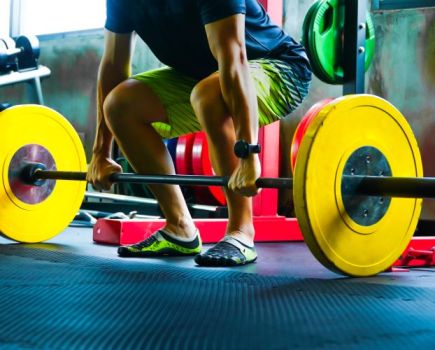Keeping track of how much you’re sweating when exercising can help you stay hydrated and perform at your best. Here’s how to measure your sweat rate.
While it might seem like something reserved for elite athletes with precise nutrition plans, anyone can benefit from knowing how to measure sweat rate – aka how much they sweat when working out. Not only can this knowledge help you to stay hydrated during training, and therefore perform at your optimum level, but it can also determine what you should be sipping during your session – with heavy sweaters or those exercising over long periods best off adding some of the best electrolyte drinks into the equation to replace the sodium lost in sweat. But first, things first, it’s important to look at why we get covered in the stuff in the first place.
Why do we sweat?
When you workout, your body’s temperature starts to rise in response to the exertion of muscles. To keep it at a steady 37°C, between 2-4 million glands from head to toe ramp up production of a cocktail of water, salt and fat (aka sweat), cooling your skin down and with it your internal engine. The amount produced varies from individual to individual, while other factors like exercise intensity, climate, and stress can all contribute to the quantity of perspiration.
How to calculate your sweat rate:
According to the CDC, the formula to work out your sweating rate is (sweating rate = pre-exercise body weight – post-exercise body weight + fluid intake – urine volume/exercise time in hours). If the last time you did maths was at school, you can follow the below step-by-step guide to measure your sweat rate:
- Go for a wee and then weigh yourself without clothing in KG (A).
- Before exercising, measure any fluids you are taking with you in litres (X)
- Perform your exercise, which should be between 1 and 2 hours (D)
- Post-exercise, weigh your water bottle to see the remaining amount of fluids (Y)
- Calculate the amount drunk (X) – (Y) = (Z)
- Towel yourself dry and weigh yourself again without clothing in KG (B)
- Calculate your weight loss (A) – (B) = ©
- Calculate your sweat rate ( © + (Z) ) / (D) =mL/h
What does your sweat rate mean?
Now you’ve got your number, you know roughly how many milliliters of sweat you produce per hour when exercising. While external factors like those mentioned above can play an impact, you can simply adjust your base figure to fit the requirements (e.g. if your sweat rate is 1,000ml/h, you might want to drink slightly more during a warmer workout).
If your number is greater than 1,200ml/h, your exercise lasts more than two hours, or you have salty sweat (telltale signs include white marks on your clothing, a salty taste on the lips, and a stinging sensation if you get it in your eyes) then according to the Academy of Sports Nutrition and Medicine, you might want to consider getting clued up on what electrolyte drinks are and how they might be able to help.







